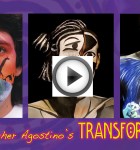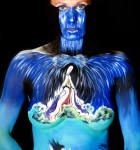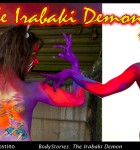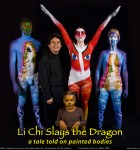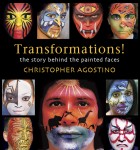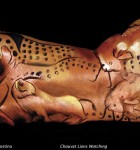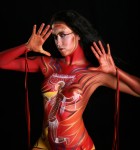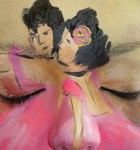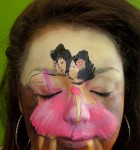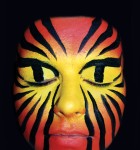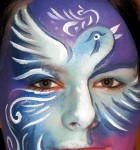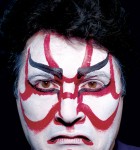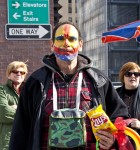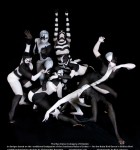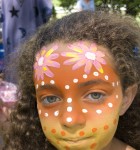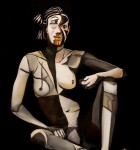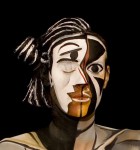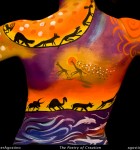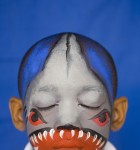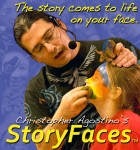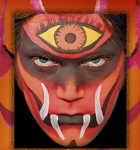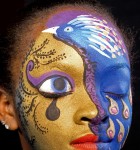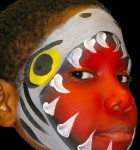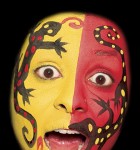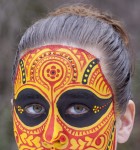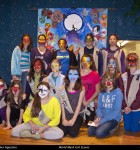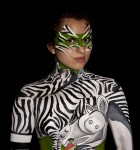•••• The Modern Primitive Art Series ••••
Photographic prints of fine art bodypainting.

Beginning in 2008, I did a series of painted bodies to be shown in life-sized photographs, as if they were paintings on canvas.
13 paintings are completed.
In the writings from and about the early 20th century—when European Art re-invented itself as Modern Art—we can see that the influence of “primitive” art ran deeper than the identifiable visual elements from cultural sources such as African and tribal art in the works of many influential artists. The role of art as an integral component within the social and spiritual life of traditional communities was an inspiration for these artists in their effort to reinvigorate the transformative power of art. Picasso, amongst others, discussed a desire to make a new powerful type of art that would effect the viewer and society, an art that could no longer be experienced solely as an aesthetic act but which provoked a powerful response in the viewer. I see a parallel in the presentation of fine art painted bodies in American culture today—an act that can be seen as shocking even though it is based in truly ancient human tradition.

African Demoseille
Bodyart is a fundamental human art in all cultures—and quite probably the original act of art itself—and as such it is the initiating source of many visual art concepts. By combining the images of modern 20th century artists such as Picasso, Matisse, Derain and Klee with the body designs of traditional cultures that influenced them, I am returning this art to its source. By painting these works of art on a living, naked human to be seen in public I am striving, as did those early modern artists, to create an art that draws attention and demands a personal, emotional response from the viewer.
As I bring the images and concepts of modern artists back onto the body within the context of traditional bodyart designs I am experiencing a re-creation of this seminal moment in art history through my personal art tradition as a bodypainter. In the actual painting process I feel I am struggling to discover, understand and achieve a new way to paint on my chosen canvas just as I imagine that the modern masters felt.
Presented in exhibit as life-sized photographs in the manner of paintings, how will the viewer respond to these works? Will they see these works as “paintings” or as “body paintings”? Is this within the tradition of the contemporary artist—the tradition I am part of by birth and culture—or is this confined by the medium to be an imitation of cultural folk art? Is this art? Is this fine art?










to return to our website: www.agostinoarts.com

